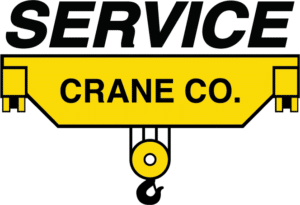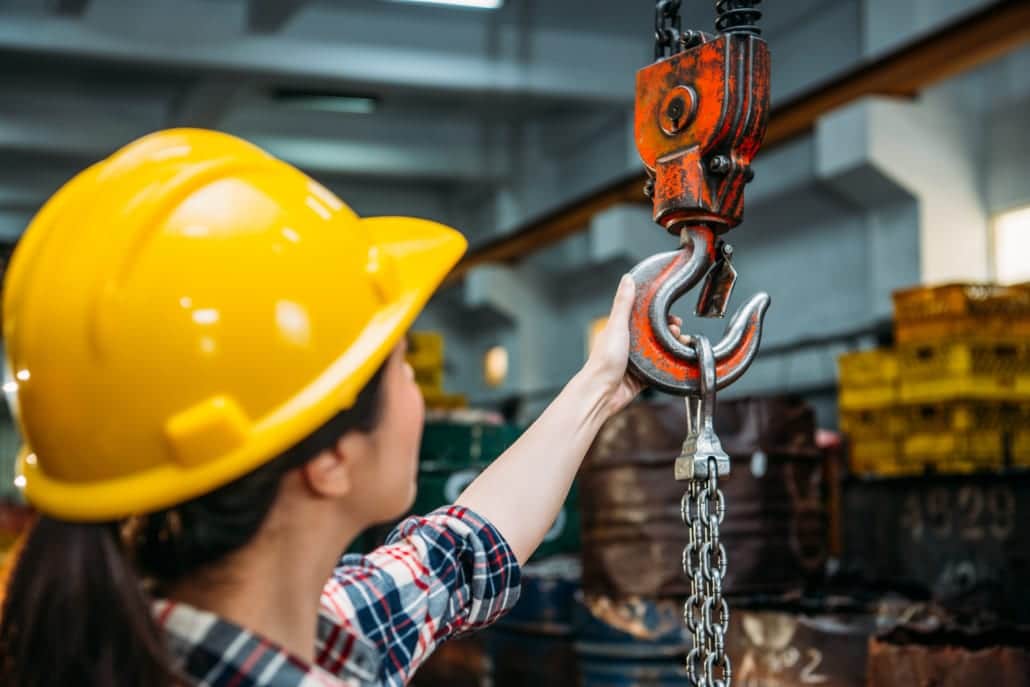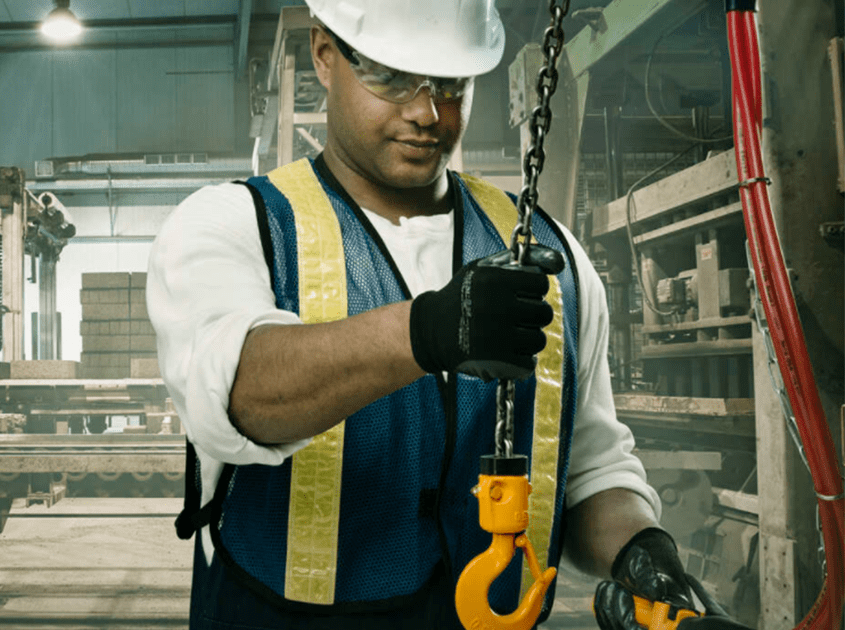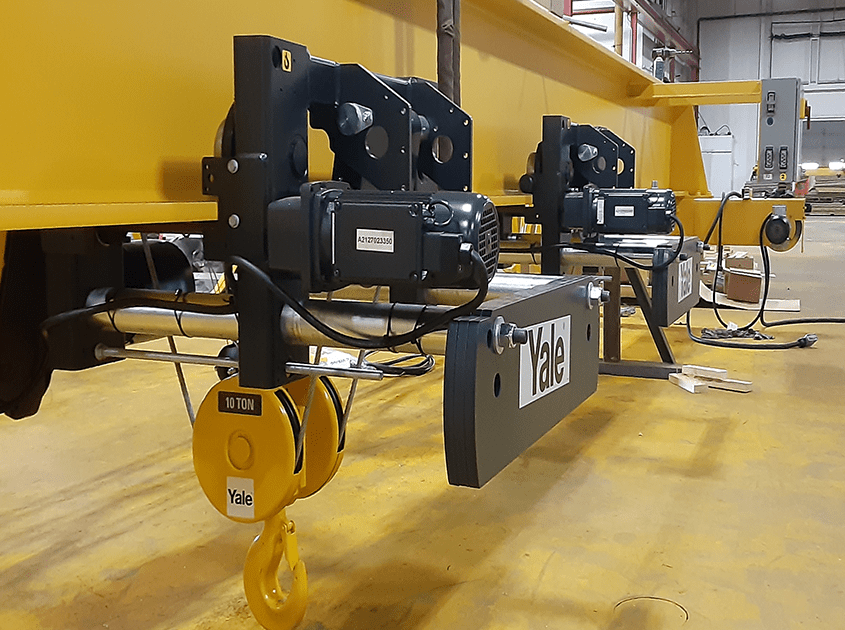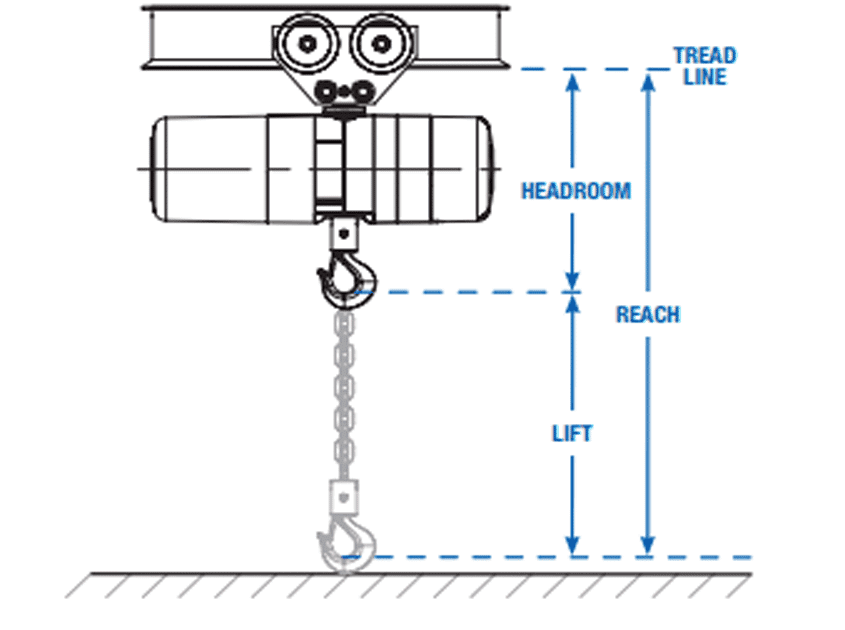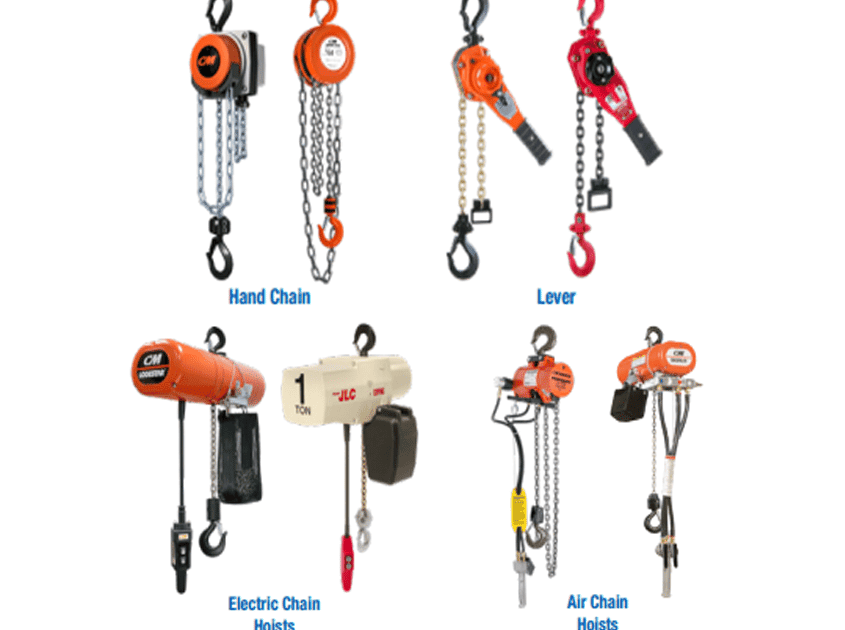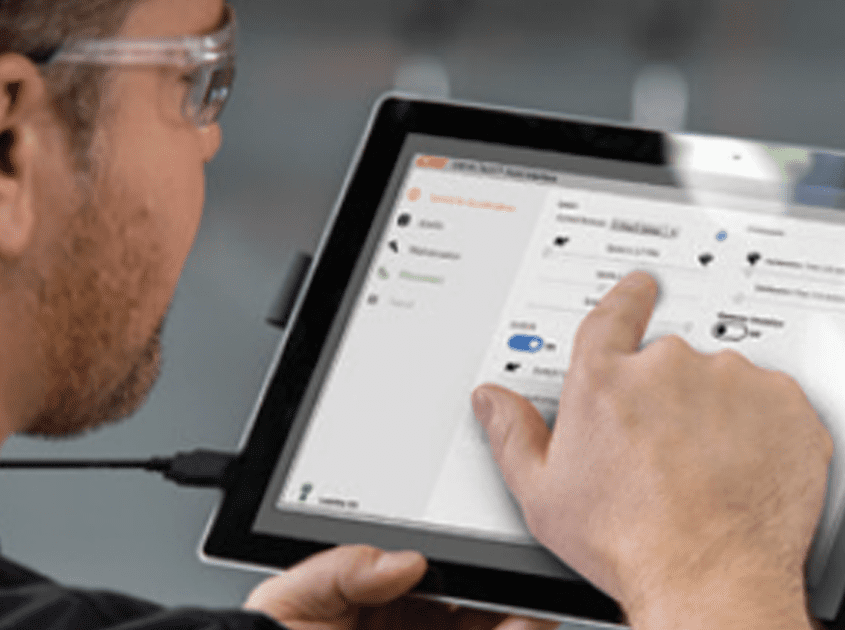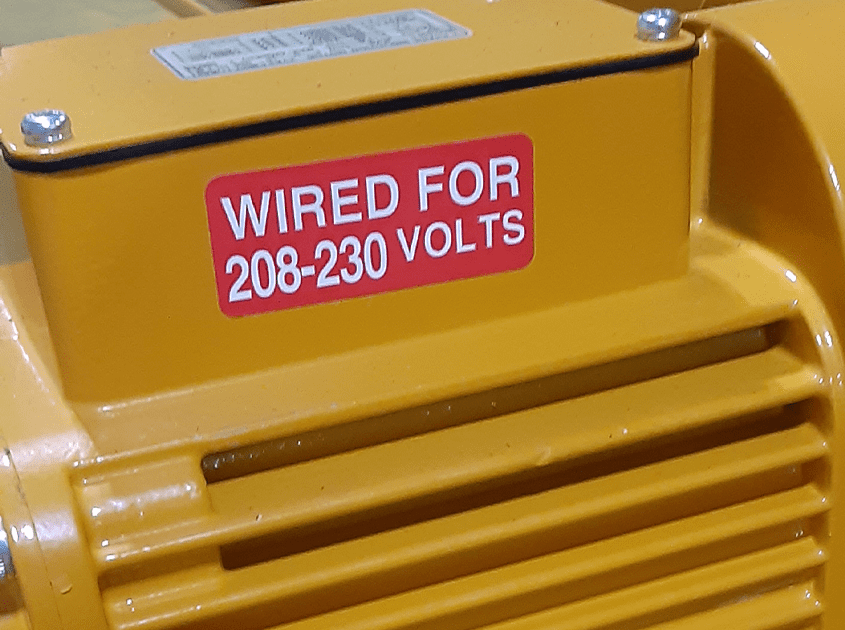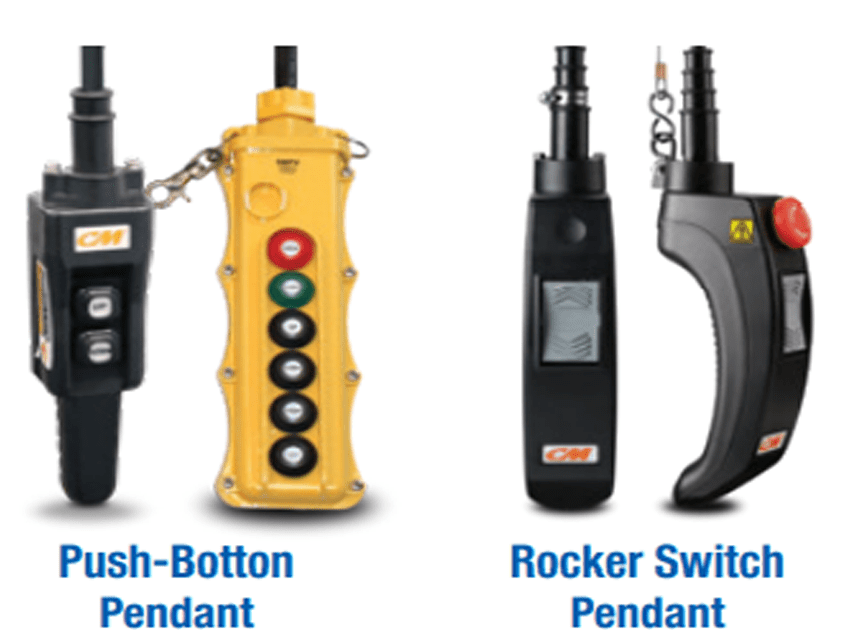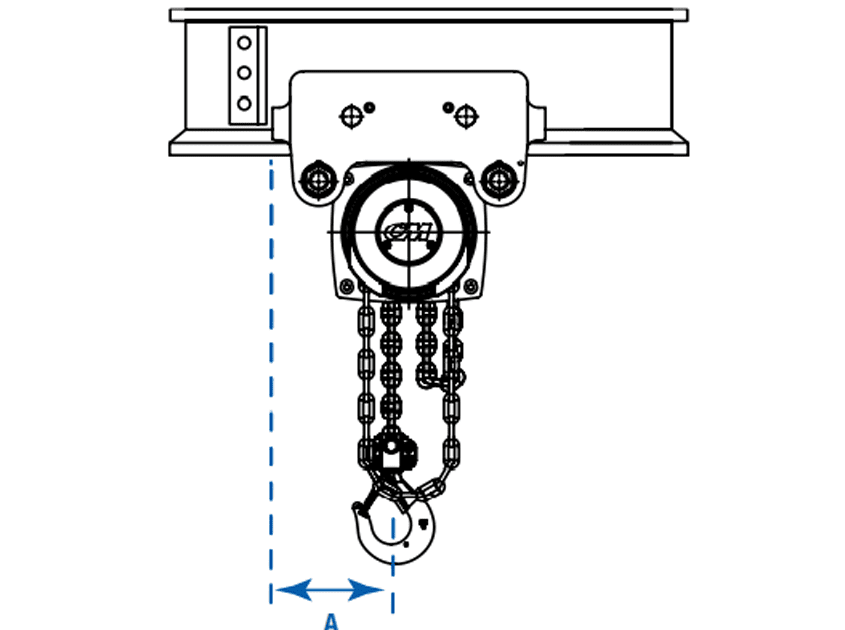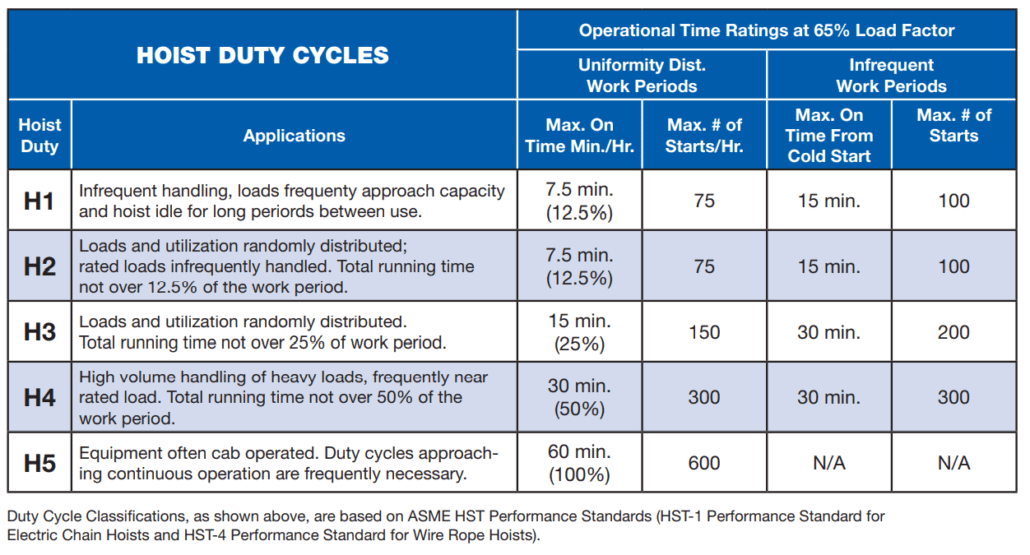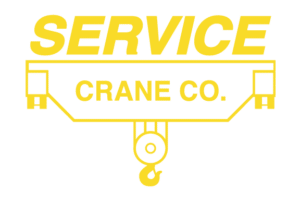What to Consider When Selecting a Hoist for an Overhead Crane
Purchasing or specifying chain overhead crane hoists to lift heavy objects in close proximity to equipment or personnel is a decision that deserves thoughtful consideration. We would like to identify some important factors to consider in your decision-making process.
Information below was derived from CMCO – Choosing the Right Hoist.pdf (columbusmckinnon.com)
Questions?
We’d be happy to talk.
DETERMINE REQUIRED CAPACITY
When selecting a chain hoist, the rated capacity should be at least as high as the weight of the heaviest load to be lifted and no higher than the rated capacity of the pad eye, monorail system or other overhead structure from which the hoist will be suspended. When determining load on hook, you must include the weight of the load to be lifted, plus any lifting devices such as slings, shackles or lifting beams. If you’re in between available capacities, round up to the next available standard capacity (2,000 lbs. = 1 Ton)
SELECT A SUSPENSION TYPE
Chain hoists can be suspended in a fixed location or they can be trolley mounted by means of a top hook or mounting lug. Trolleys can be rigid or articulating. Trolley traverse can be plain (push-type), hand geared or motor driven. Refer to below for examples of common chain hoist suspension types.
CHOOSE YOUR LIFT, REACH & HEADROOM
It’s appropriate to group these three parameters together because they are closely related.
LIFT is the distance the load hook can travel between its fully lowered and fully raised positions.
REACH is equal to the difference in elevation between the hoist suspension point (pad eye or trolley beam running surface) and the
hook saddle in its lowest position.
HEADROOM is the distance from the hoist suspension point and the fully raised hook saddle (see diagram). For a hoist with top-hook suspension, the headroom dimension is the distance between the saddle of the top hook and the saddle of the fully raised lower hook.
UNDERSTAND THE OPERATION TYPE NEEDED
MANUAL CHAIN HOISTS
Manual chain hoists have the lowest purchase price, making them ideal for applications involving temporary or infrequent use, low capacities, short lift height and when power sources are not available.
POWERED CHAIN HOISTS
Powered chain hoists offer faster lifting speeds, are more ergonomic and are better suited than manual hoists for heavy duty cycles, high capacities and long lifts
CHOOSE YOUR LIFTING SPEED
NUMBER OF SPEEDS: Hoists are available in 1-speed, 2-speed, and variable speed/VFD configurations. VFD units are able to be programmed in the field to a user’s specifications.
LIFTING SPEEDS: Hoist lifting speeds vary widely and should be considered carefully before making a selection. Generally speaking, faster lifting speeds are preferred for long lifts or for shorter lift applications in which a high number of lifting/lowering cycles must be completed in a relatively short period of time.
The weight of the load to be lifted, along with the required lifting speed and hoist gear ratio, determines the torque requirement, which in turn dictates the motor horsepower required to provide that torque. Higher horsepower motors can add to the size, weight and power consumption of a hoist, as well as its cost.
CHOOSE YOUR POWER SUPPLY
Some electric hoists are designed to operate on either 115 or 230vac, single-phase power. These hoists are typically ¼ to 2-ton capacity and are most often used in home workshops, garages, and some light manufacturing facilities. Most industrial facilities throughout North America are wired for 208, 230, 460 or 575v, 3-phase, 60 Hz power. The most common are voltages are 230v and 460v, although 575v is also frequently used in Canada. It is important to verify your available power supply before attempting to purchase or specify an electric hoist.
Most common power supply options are 115-1-60 (referred to as 115V single phase) and 230-3-60 or 460-3-60 (referred to as 230V or 460V 3-phase)
CHOOSE A PENDANT
The majority of electric chain hoists come equipped with a hard-wired control pendant that is suspended from the hoist, trolley or crane (where applicable). In some cases, hard wired pendant stations may also be wall-mounted. Wireless radio remote control systems are also available and can allow the operator to control hoist functions from anywhere within the general vicinity of the hoist. Radio control pendants can also be smaller, lighter weight and more ergonomic than a hard-wired pendant. An emergency stop button is available as on option with most pendant controls.
